Nancy Savoca made, for a time in the burgeoning indie scene of the 1990s, lovely, lilting films whose thematic ambitions were ever-so-slightly occluded by the down-to-earth, small-scale narratives her characters lived. True Love won the Grand Prize at Sundance in 1989 but barely made a blip at the box office. Three years later, her Dogfight, a tender coming-of-age story pairing Lili Taylor and River Phoenix, was basically buried by Warner Bros, a studio unable to fathom how to market a serious film with a teen girl as its protagonist. In 1993, Savoca adapted Francine Prose’s multigenerational novel of Italian-American women, Household Saints, into a mystical, magical, saga that was named of the year’s best films by twenty national critics.
And then it disappeared.
One does not normally think of film restoration and reclamation as applying to films of the late twentieth century. Cinephiles are delighted when a lost print of, say, The Passion of Joan of Arc (1928) is found in a Norwegian mental hospital and made available. But it’s equally important to preserve the precious gems of cinema’s not-too-distant past. That might include lesser-heralded fare like the Nouvelle Vague noir A Woman Kills (1968), the slight-but-still-fun Skateboard (1979), or the Chinese coming-of-age gem Spacked Out (2000), all of which had nearly completely disappeared before their respective champions set out to restore and re-release them. And we’re all the better for being able to share their wildly diverse delights.
For a filmmaker whose debut took the Grand Prize at Sundance and whose first three films all garnered significant critical acclaim, Savoca didn’t come to find herself flush with the same opportunities a man in her field would. (There are dozens of male directors who scuffle about with middling success for decades; not so, women.) The studios never really understood how to market her quiet, contemplative, even rueful films, no matter how good they were. Dogfight was as good as any teen girl coming-of-age film ever made, anchored by a touching performance from Lili Taylor, and it quickly disappeared into DVD dustbins. (Fortunately, Dogfight too is getting its day with a Criterion re-release in April 2024, never having made it so far as Blu-ray until now.)
It was feared Household Saints was lost forever. Despite its acclaim, it never got so much as a DVD release. Imagine then Savoca’s horror when she recently asked UCLA for access to the two prints it housed in its archive, only to learn that both were damaged beyond repair. Would anyone ever see Household Saints again? A panicked Savoca was relieved to find the film’s rights had been purchased by an individual investor. But he had passed away. Fortunately, his estate had kept a copy of the film, and working with The Missing Movies Initiative, Kino Lorber, the Lightbox Film Center at University of the Arts (Philadelphia), and Milestone Films, Savoca was able to oversee the film’s restoration and re-release this year.
The restored Household Saints is a treasure. Savoca and her husband and collaborator (also on True Love and Dogfight) Rich Guay chronicle a spirited Italian-American New York family over three generations of gentle comedy and genuine tragedy. The cast is impressive: Taylor returns for her second film in a row with Savoca. Tracey Ullman and Vincent D’Onofrio play her parents; Michael Imperioli, Judith Malina, Michael Rispoli, and Victor Argo round out the cast; and Jonathan Demme lends his hand and guiding indie spirit as executive producer.
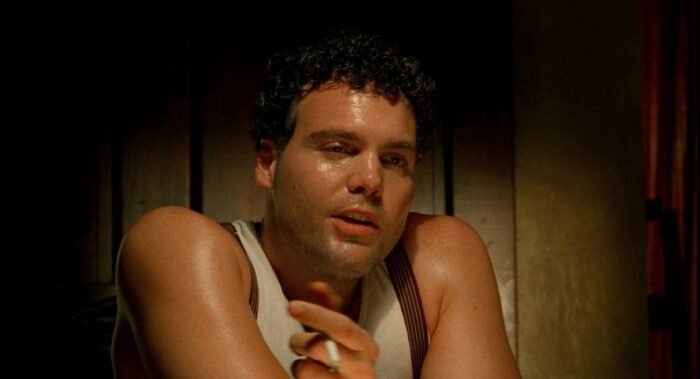
The tale is, essentially, twofold, told in flashback. Joseph Santangelo (a handsome young D’Onofrio) is a neighborhood butcher with his thumb on the scale (and a few other places!) who wins a pinochle game and with it, a new wife, Catherine (Ullman). Their life as newlyweds isn’t easy, especially with the protests of his mother Carmela (Malina): she’s deliriously devout, talking with ghosts and making deals with saints. And she’s no fan of Catherine’s admittedly atrocious cooking. Worse yet, Catherine pays little heed to her mother-in-law’s superstitions, one of which apparently comes true when a pregnant Catherine suffers a strange miscarriage: a stillborn baby sprouting a small pair of chicken wings.
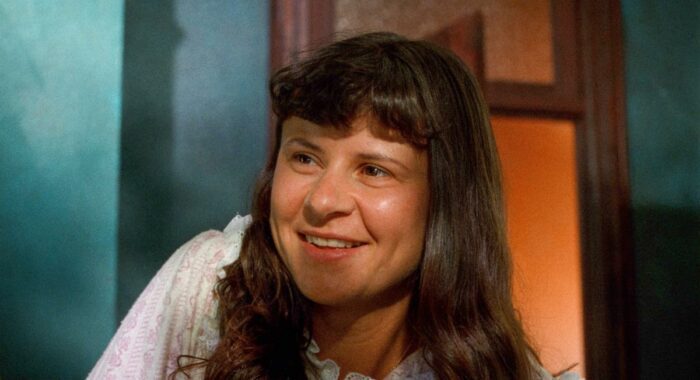
Only after Carmela passes are Joseph and Catherine blessed with a child, Teresa (first played as a child by Rachael Bella, then by Taylor). As she grows, she seems to channel the spirit of her grandmother, vexing her parents. Beautiful and beatific, Teresa aspires to nothing short, literally, of sainthood. Inspired by the prize for an essay contest, the autobiography of Saint Therese of Lisieux, The Little Flower: The Story of a Soul, Teresa vows to follow the saint’s “little way.”
Yearning to do nothing more or other than serve God might sound overly pious for a character or for a narrative, but Household Saints‘ story picks up whenever Taylor is on screen. Like in Dogfight, Taylor manages to take a character that simply couldn’t work in a lesser actor’s hands and bring her to life on the screen. Her Teresa is saintly, but not a Mary Sue or Goody Two-Shoes. She’s a complex young woman, undaunted in her love of her God, whose fastidious devotion comes into increasing conflict with the very secular world in which she lives.
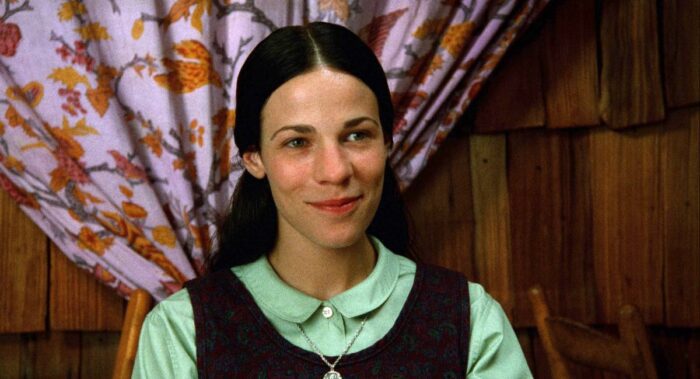
Born in 1952 and coming of age in the 1960s, Teresa finds the world around her less than tolerant of her devotion to Jesus. He fastidiousness earns her the distrust of her schoolmates and the ire of her parents—Joseph, especially, is disgruntled with Teresa’s accumulation of sacramentals, including some that had been owned by her grandmother. A young law student she meets, Leonard Villanova (Michael Imperioli) is fascinated by her, if a bit too self-involved to take much notice of her saintly aspirations.
If Teresa’s only interest is her own spiritual path, Leonard’s is his own future. An aspiring intellectual of the decade’s Nouvelle Vague and art-prog rock, he takes Terese to watch Alain Resnais’ Last Year at Marienbad and to listen to the Moody Blues’ “Question” on his apartment stereo—under the pretense of needing her help hanging curtains. His goal is to become “a television lawyer,” he tells her of his “Villanova Plan.” (He does not lack for self-assuredness.) Her naive response? “Like Perry Mason?” she asks. Leonard shrugs off the response, not quite processing that perhaps, just perhaps, unsure of the lines between fact and fiction, Teresa’s devotion may signify an underlying psychosis.
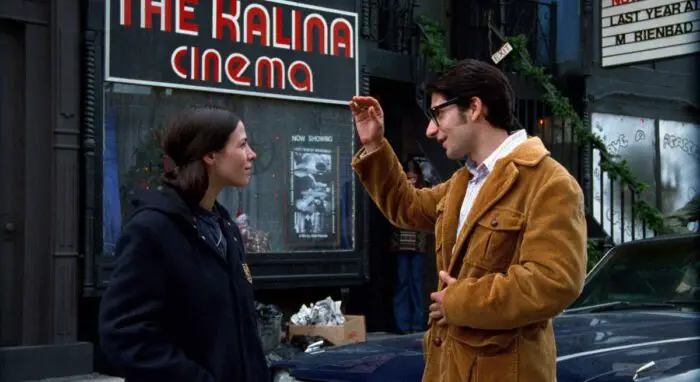
Indeed, that becomes precisely the diagnosis, though its source is surprising. After Leonard beds a willing Teresa, she is visited by her one true love: Jesus Christ, his hair laden with thorns and palms marked with blood. Teresa’s account of the curious episode, where Jesus encourages Teresa to iron Leonard’s shirts, is taken for a sign of a psychological breakdown. It is one of the nuns who gives her parents the news: “Teresa’s case has been diagnosed as one of acute hallucinatory psychosis, brought on by a particularly difficult and prolonged adolescent psychosexual adjustment, no doubt aggravated by a somewhat obsessional religious nature.”
So: not even the nuns can process Teresa’s devout vision as genuine. Is she, truly, destined for sainthood? Or has she, as the nun suggests, merely succumbed to her religious obsessions? Household Saints does not exactly answer the question so much as it allows for either possibility. That’s part of the film’s—and of Savoca’s—unique genius as a filmmaker, and it accounts both for the delicious thematic complexity of her films and the inability (or unwillingness) of studios to market them. More than a few of the great American auteurs have made the Catholicism of Italian American immigrant families their focus. But only those focused on crime, for the most part, have generated both critical acclaim and mass appeal.
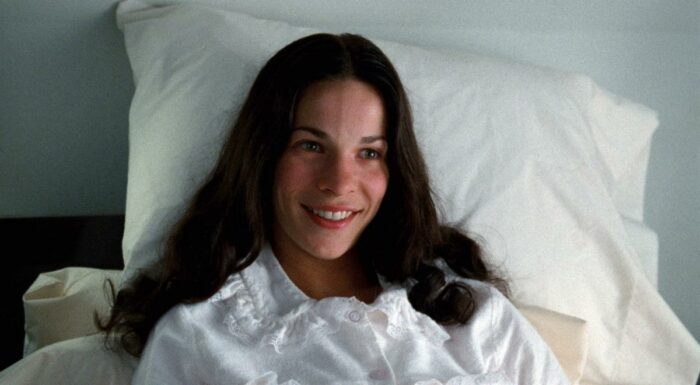
Household Saints, unlike, say, The Godfather or Goodfellas, to name two of Francis Ford Coppola and Martin Scorsese’s more celebrated studies of Italian American families, involves no crime and no violence. There is plenty of blood—dripping from sausage, marking a miscarriage, seeping from palms, staining a bed sheet, and more, creating a powerful visual motif—but none of it is the consequence of gunplay or bat-bashing. Household Saints takes its focus inward, where it is the women’s rule of their households that shapes each generation to come. Its women enforce the family rules, pass down customs from one generation to the next, and provide religious instruction. They are not, especially in Savoca’s vision, the Italian American women of cinema’s past, the bombshells like Sophia Loren, nor are they stereotyped as the simple Madonnas or whores so common to representation on film.
Teresa may or may not be a saint, and in her family’s lore, the question will always remain. She bears the mark of stigmata at her death, but as one of her younger relatives puts it, “I could name a list of women as long as my arm who went crazy cooking and cleaning and trying to please everyone. So she saw Jesus at the ironing board, that makes her a saint?” Savoca presents plenty of evidence to suggest that Teresa was, indeed a saint: she was devout, she saw Jesus, she bore the mark of stigmata as he did on the cross. And yet she also forces us to confront the question of her sainthood just as it does the question of Italian American women’s assimilation into a broader American consumerist culture. Is there a place for the devoutly religious in a culture run by television lawyers?
One might as well as if there is a place in the dominant culture of American cinema for a filmmaker like Nancy Savoca, who, at the peak of her powers and following a grand debut, made in Dogfight and Household Saints two thought-provoking, brilliantly acted, and mesmerizing films featuring young female protagonists who simply did not accede to the dominant culture. Studio heads marketed neither, and despite their critical acclaim, both films practically disappeared, Dogfight to DVD dustbins and Household Saints to the decay of forgotten prints sitting on archive shelves.
That both of these films are just now coming back, now, after 40-plus years, into circulation—Dogfight in The Criterion Collection this spring and Household Saints in this beautiful new restoration—is a sign that perhaps there is room for those women, those voices, who might not be heard at first. Like her protagonists, women who did not fit in their times, Nancy Savoca and her unique cinema warrants preservation. Her films may never have garnered mass appeal, nor were they intended to, but they provide a unique counterpoint to Hollywood’s more conventional and often less challenging perspectives.
Household Saints, digitally restored in 4K, is currently playing in select theaters across the U.S.




